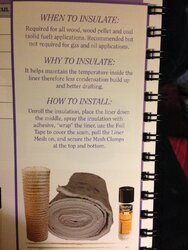Made my first video today on the iPhone. Here is how I make my fireplace damper terminations. What I forgot to mention...there is 8" of mineral wool on top of these plates.
For those who are curious...yes, that's me there doing the talking. MY GOD! I'm bald!!
For those who are curious...yes, that's me there doing the talking. MY GOD! I'm bald!!



 And don't worry, GOD is with you my man....
And don't worry, GOD is with you my man.... Also if the insulation is fire proof it will protect the room against a chimney fire !
Also if the insulation is fire proof it will protect the room against a chimney fire ! . Nice snipper work. We use a fancy plasma cutter thingy. HIgher danger level=more danger. And who doesn't like some danger?
. Nice snipper work. We use a fancy plasma cutter thingy. HIgher danger level=more danger. And who doesn't like some danger?
